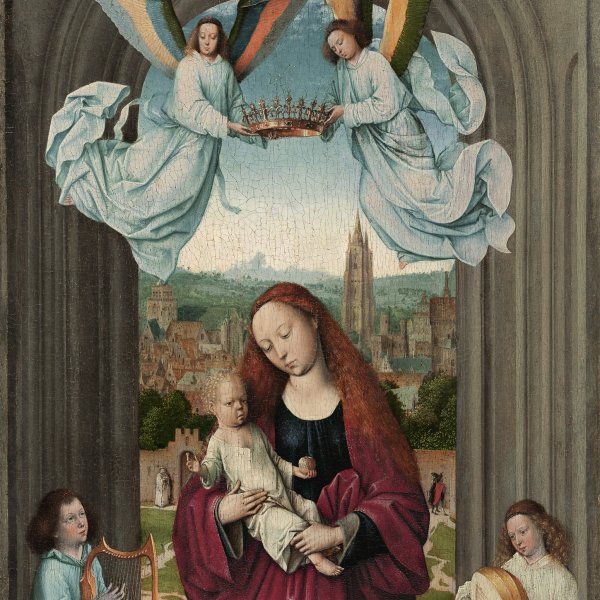Master of the André Madonna
The name given to this anonymous artist is based on a panel of The Virgin, depicted more than half-length and with a landscape background (Musée Jacquemart André, Paris). Only two further works have been attributed to his hand: The Virgin and Child (Everhart Museum, Scranton, Penn.), and another panel of The Virgin and Child between Angels (Museo Thyssen-Bornemisza, Madrid). In the middle-ground of these compositions the artist included a city that has been identified as Bruges due to the presence of the bell-tower of the cathedral of Notre-Dame.
The style of the Master of the André Madonna looks to that of Jan van Eyck, whom he closely followed, and that of Petrus Christus, while also revealing the influence of his contemporary Gerard David. This is the case with the panel in Madrid, in which David’s style is clearly evident, in particular that artist’s Virgin and Child with four Angels (The Metropolitan Museum, New York). The Master of the André Madonna worked in a slightly archaic style for the day given that his work does not make use of any of the Renaissance elements and motifs that his contemporaries were incorporating into their paintings in the early years of the 16th century. His style reveals a preference for anecdotal detail as well as a use of solemn, noble expressions for the figures and an interest in the depiction of the draperies.




